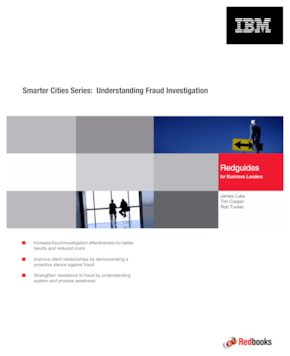Abstract
Fraud and financial crime is a significant, persistent, and evolving challenge to the public and private sector. It costs an estimated five to eight percent of revenues per annum and, overall, is measured in trillions of dollars.
In addition to the direct financial impact, there is also a real risk of long-term damage to reputation, client confidence, and violation of regulations, leading to fines and an impact on shareholder value in the private sector, and loss of confidence in public bodies.
Public awareness and nonacceptance of the costs of fraud and financial crime are also increasing. Clients expect to interact over many online and offline channels. The inevitable increase in the volume, variety, and velocity of data multiplies the risk of a successful attack. Criminals are becoming increasingly adept and knowledgeable at probing for and exploiting any system or process weakness. The complexity and fragmented nature of these interactions effectively hides the evidence. To see the complete picture, these disparate data sources must be combined.
Organizations who adopt a proactive response to fraud have a real competitive advantage with a tangible deterrent effect. Demonstrating and evidencing suspicious activity also provides a powerful challenge capability to prevent fraud. In certain circumstances, this evidence is passed to law enforcement for criminal prosecution. Fully uncovering how the fraud was perpetrated also enables system and process controls to be tightened to avoid repeated loss.
Traditionally, companies counter attacks with point or line of business solutions. This approach is difficult to manage, often missing complex cross-channel attacks by organized criminals. This approach also results in a more expensive, fragmented, and difficult to manage solution.
IBM® i2® Fraud Intelligence Analysis provides an integrated solution for fraud investigation and discovery. The solution enables the rapid documentation of fraud and financial crime and provides actionable intelligence for repudiation, remediation, and prosecution. Key capabilities of the Fraud Intelligence Analysis solution include the following items:
- Powerful visual analytics for appraising and understanding of information to uncover fraudulent activities, networks, and targets.
- Built-in investigation management and coordination tools, keeping investigation work on track and recording key findings and decisions.
- Data acquisition capabilities to connect the investigation team to the right information quickly and effectively.
- Reporting and dashboards to show progress and effectiveness of investigations.
- Collaborative tools, supporting information sharing and communication, joining the dots between previously siloed investigation activities.
This IBM Redguide™ publication describes the Fraud Intelligence Analysis capabilities and offerings. This guide also explores how Fraud Intelligence Analysis can be used as part of a broader fraud and financial crime solution.
Table of Contents
Executive overview
Fraud and financial crime in different industries
The evolution and industrialization of fraud and financial crime
IBM i2 Fraud Intelligence Analysis
IBM i2 Fraud Intelligence Analysis core components
IBM i2 Fraud Intelligence Analysis integration
Extending IBM i2 Fraud Intelligence Analysis
Summary
